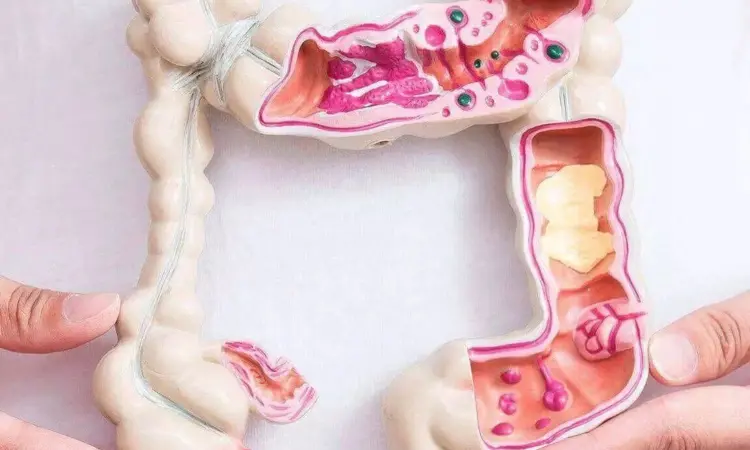- Home
- Medical news & Guidelines
- Anesthesiology
- Cardiology and CTVS
- Critical Care
- Dentistry
- Dermatology
- Diabetes and Endocrinology
- ENT
- Gastroenterology
- Medicine
- Nephrology
- Neurology
- Obstretics-Gynaecology
- Oncology
- Ophthalmology
- Orthopaedics
- Pediatrics-Neonatology
- Psychiatry
- Pulmonology
- Radiology
- Surgery
- Urology
- Laboratory Medicine
- Diet
- Nursing
- Paramedical
- Physiotherapy
- Health news
- Fact Check
- Bone Health Fact Check
- Brain Health Fact Check
- Cancer Related Fact Check
- Child Care Fact Check
- Dental and oral health fact check
- Diabetes and metabolic health fact check
- Diet and Nutrition Fact Check
- Eye and ENT Care Fact Check
- Fitness fact check
- Gut health fact check
- Heart health fact check
- Kidney health fact check
- Medical education fact check
- Men's health fact check
- Respiratory fact check
- Skin and hair care fact check
- Vaccine and Immunization fact check
- Women's health fact check
- AYUSH
- State News
- Andaman and Nicobar Islands
- Andhra Pradesh
- Arunachal Pradesh
- Assam
- Bihar
- Chandigarh
- Chattisgarh
- Dadra and Nagar Haveli
- Daman and Diu
- Delhi
- Goa
- Gujarat
- Haryana
- Himachal Pradesh
- Jammu & Kashmir
- Jharkhand
- Karnataka
- Kerala
- Ladakh
- Lakshadweep
- Madhya Pradesh
- Maharashtra
- Manipur
- Meghalaya
- Mizoram
- Nagaland
- Odisha
- Puducherry
- Punjab
- Rajasthan
- Sikkim
- Tamil Nadu
- Telangana
- Tripura
- Uttar Pradesh
- Uttrakhand
- West Bengal
- Medical Education
- Industry
Postoperative packing of perianal abscess cavities linked to poor outcomes

UK: According to PPAC2 trial, which has been published in the British Journal of Surgery, postoperative perianal abscess wound cavities treated without internal wound packing produce noticeably less discomfort without markedly raising the risk of perianal fistula and abscess recurrence.
An infection and swelling around the anus brought on by blockage of the anal glands causes perianal abscess, a frequent and unpleasant illness. For more than 50 years, there has been no change in how perianal abscess is treated. Following surgical abscess incision and drainage while under general anesthesia, the community will continue to dress (pack) the resulting wound cavity internally until the wound is healed. There is no evidence to support the surgical orthodoxy that packing decreases the rate of perianal fistula development and abscess recurrence.
The Postoperative Packing of Perianal Abscess Cavities (PPAC2) trial's goal was to ascertain whether leaving perianal abscess cavities unpacked would be less unpleasant overall while reducing the risk of perianal fistula and abscess recurrence.
This research was accomplished with the help of the Postoperative Packing of Perianal Abscess Cavities (PPAC2) trial. A primary perianal abscess in an adult participant who had been hospitalized to an NHS hospital for incision and drainage was the subject of a multicenter, RCT (two-group parallel design). Online randomization was used to assign participants in a 1:1 ratio to either continue postoperative wound packing or not. 433 individuals (mean age 42 years) were randomly distributed across 50 sites between February 2018 and March 2020. Over the course of six months, blinded data were gathered through clinics, the phone, and symptom diaries. Pain was the main result (mean maximum pain score on a 100-point visual analogue scale). Secondary endpoints were pain prior to, during, and following dressing changes; postoperative recurrence of perianal fistula and abscess; bleeding (requiring transfusion or return to theatre); and rate of wound healing (at 4, 8, and 26 weeks).
Conclusive points of the trial:
- 214 subjects assigned to packing experienced more pain than 220 participants assigned to non-packing (38.2 versus 28.2, mean difference 9.9; P <0.0001).
- Fistula-in-ano was uncommon in both groups, with 32/213 (15%) in the packing group and 24/220 (11%) in the non-packing group (OR 0.69, 95% c.i. 0.39 to 1.22; P = 0.20).
- The percentage of patients who experienced an abscess recurrence was also minimal: 13/223 (6%) in the non-packing group and 7/213 (3%) in the packing group (OR 1.85, 95% c.i. 0.72 to 4.73; P = 0.20).
- The no-packing group was favored in terms of pain levels both during and after dressing changes (mean difference 10.2, 95% c.i. 4.1 to 16.3; P 0.001 and 5.8, 95% c.i. 0.1 to 11.5; P = 0.007).
- Fistula was discovered after a follow-up of 6 months in 32/213 (15%) of the packing group and 24/220 (11%) of the non-packing group (OR 0.69, 95% c.i. 0.39 to 1.22; P = 0.204).
- Total healing was documented in 112/163 (69%) in the packing group and 138/175 (79%) in the no-packing group during the course of the 6-month follow-up period (P = 0.046).
The authors came to the conclusion that avoiding abscess cavity packing is less painful without increasing the risk of morbidity. The optimal course of treatment is to avoid packing perianal abscess wounds following drainage surgery, they added.
Reference
Katy Newton, Jo Dumville, Michelle Briggs, Jennifer Law, Julia Martin, Lyndsay Pearce, Cliona Kirwan, Thomas Pinkney, Alexander Needham, Richard Jackson, Simon Winn, Haley McCulloch, James Hill, PPAC2 Collaborators, Postoperative Packing of Perianal Abscess Cavities (PPAC2): randomized clinical trial, British Journal of Surgery, Volume 109, Issue 10, October 2022, Pages 951–957, https://doi.org/10.1093/bjs/znac225
Dr Kamal Kant Kohli-MBBS, DTCD- a chest specialist with more than 30 years of practice and a flair for writing clinical articles, Dr Kamal Kant Kohli joined Medical Dialogues as a Chief Editor of Medical News. Besides writing articles, as an editor, he proofreads and verifies all the medical content published on Medical Dialogues including those coming from journals, studies,medical conferences,guidelines etc. Email: drkohli@medicaldialogues.in. Contact no. 011-43720751


